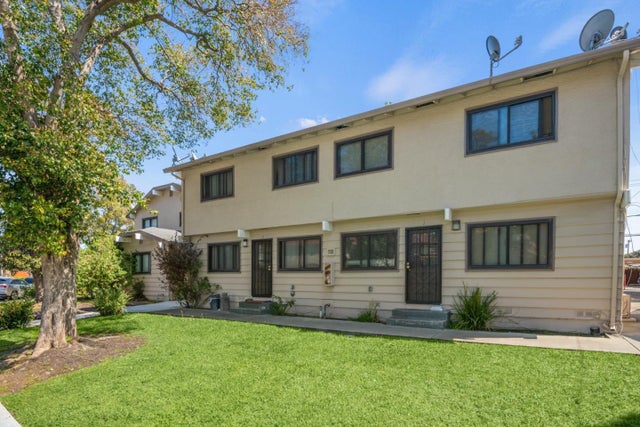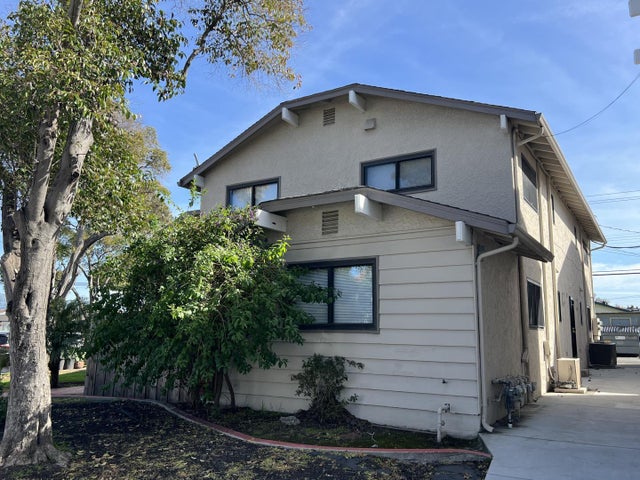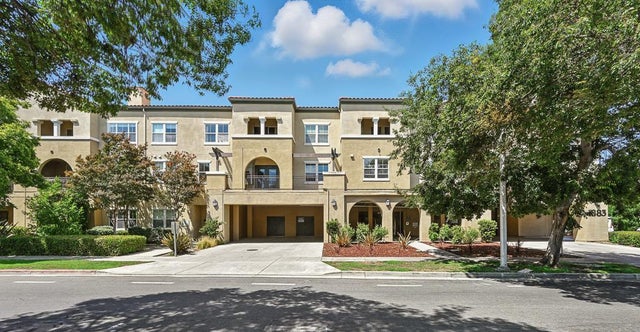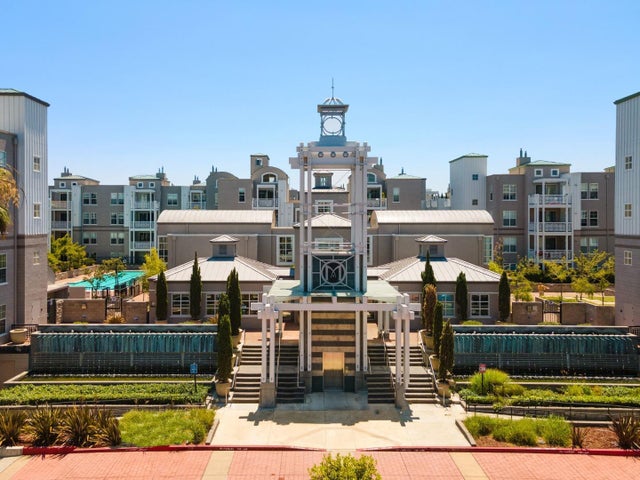- Multi-Residential
- 0 Beds
- 0 Baths
- 5,060 SqFt
Santa Clara Real Estate
In 1769, Jose Francisco Ortega, scouting for the Portola-Serra party, became the first European to visit the fertile valley that later became known as the Santa Clara Valley. The area was inhabited by Indians who were named Los Costanos (the coast people) by the Spanish, and later were called the Ohlone. Spain began colonizing California by establishing a string of 21 churches, called missions, that eventually stretched 600 miles along the California Coast from San Diego to Sonoma. The Franciscan padres (priests) selected the fertile valley discovered by Ortega to establish the eighth mission, Mission Santa Clara, named for Saint Clare. The mission was founded January 12, 1777.
In 1821, the Mexicans achieved independence from Spain, but the change of rulers created no changes in the way the missions operated. The Ohlone were still brought to the mission for compulsory baptism and conversion to Christianity. Records show that by December, 1828, there had been 8,279 baptisms, 2,376 marriages, and 6,408 deaths at Mission Santa Clara.
In 1836, control of Mission Santa Clara was taken from the padres and turned over to civil commissioners who were supposed to oversee the "return of the land to the native population." This did not happen and squatters took over the church buildings and land. Disorder and decay set in and by 1839, there were only 300 Indians remaining in the vicinity of Mission Santa Clara. About this time, the Mexican governor began issuing land grants to various favored people. The land was used for vast ranchos (ranches); large numbers of cattle were raised and roamed at will over the land. Hides and tallow from the livestock eventually comprised the first commercial export product and industry in the area.
By the 1840's, the American frontier had expanded to California and new settlers began arriving in the area. The raising of the American flag over Monterey in July of 1846 was a symbol of the fact that the lands of California had passed from the hands of Mexico to the United States. California became a state in 1850.
When promises of great wealth failed to materialize during the Gold Rush of 1849, many of the gold seekers turned to the "gold" that was the fertile land of the Santa Clara Valley and began to settle in Santa Clara.
In the 1850's the hamlet of Santa Clara began to take shape as a recognizable small town. The town site was surveyed by William Campbell into lots one hundred yards square, and one lot was given to each citizen with the understanding that he was to build a house on it within three months or lose the property. A schoolhouse and a church were built, several hotels erected, mercantile businesses established, and 23 houses were imported from Boston to be set up in the town.
In 1851, Santa Clara College was established on the old mission site and became a prominent feature of the developing town. Santa Clara incorporated as a town on July 5, 1852, and became a state-chartered city in 1862. By this time the city encompassed an area two miles long and one and a half miles wide. Outside city limits, small family farms and orchards developed and thrived in testimony of the area's fertile soil and mild climate.
As the town grew, it was supported by a variety of manufacturing, seed, and fruit industries. One of the earliest manufacturing businesses in Santa Clara was Wampach Tannery, established in 1849. In 1866, the business was taken over by Jacob Eberhard. Eberhard Tannery provided employment for the area for many years until torn down in 1953. Its fine leather products were sent to the Eastern U.S. states as well as Europe.
Another major employer was Pacific Manufacturing Company. Established in 1874, it became the largest wood products supplier on the Pacific Coast. It supplied quality lumber, mill work, sashes and doors, and moldings as well as coffins and caskets. The business closed in 1960.
The immediate vicinity around Santa Clara became famous for its acre-upon-acre of flower and vegetable seed farms. J. M. Kimberlin and Co. was the first seed company to establish in Santa Clara in 1875, and it eventually became the largest seed grower on the Pacific Coast.
C. C. Morse and Company seed farms started in the seed growing business after Kimberlin and grew to be the largest seed producer in the world. At harvest time, the company employed 500 people. Morse's main warehouse was located in Santa Clara near the railroad station.
The abundant fruit crop Santa Clara orchards produced was either shipped fresh, dried, or canned. Levi A. Gould, a Santa Clara orchardist, shipped the state's first carload of fresh fruit east in 1869, shortly after the transcontinental railroad was completed. Block Fruit Packing Company, established in 1878 on Gould's orchard land, became renown for the pears and cherries it packed and shipped to the east coast.
Pratt-Low Preserving Company, established in 1905, sent canned apricots, pears, peaches, cherries, and plums to all parts of the United States, England, and the Orient. During harvest season, 300 to 400 women and men were employed in the handling, sorting and canning process.
The California Cured Fruit Association was formed in 1900 to handle distribution of the dried fruit. In 1901, the Association built a large dried fruit warehouse near Santa Clara's railroad station. The Cured Fruit Association disbanded in 1903. In 1916, Rosenberg Brothers took over the warehouse for its dried prune and apricot operation.
As the 19th century came to a close, more and more people arrived seeking the mild climate and job opportunities of the Santa Clara area. By 1906, the population of the city had grown to nearly 5,000. The population remained fairly stable and did not increase greatly until after World War II when the city outgrew its 19th century boundaries and expanded to open lands north and west of the original city limits. The farms and orchards began to accommodate the burgeoning population.
A new product, the semiconductor chip, was developed in the 1950's. The resulting electronics industry, based on the silicon chip, gobbled up the remaining orchard land and changed the agricultural nature of Santa Clara and Santa Clara Valley forever. By 1990, the city covered 19.3 square miles and had a population of more than 93,000.
Few remnants of Santa Clara's agricultural past remain as it today sits in the heart of what is known world-wide as Silicon Valley. By harvesting the fruits of high technology, the Mission City has become a prosperous and progressive city with much to offer residents, businesses, and visitors alike.
Santa Clara Homes for Sale
| All Listings | $600,000 - $700,000 | $900,000 - $1,000,000 |
| Over $1,000,000 |







